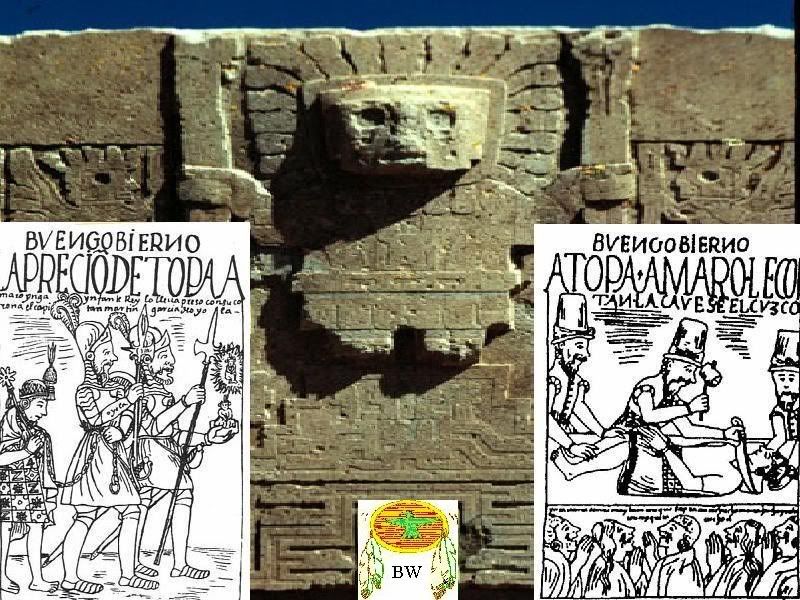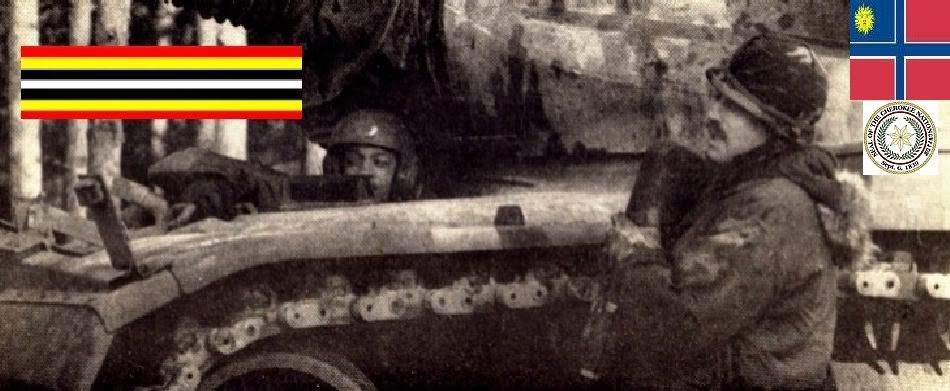|

Tupaq Amaru the Last Inca King
Warriors Citation
Túpac Amaru (Thupaq Amaru in modern Quechua), was the last indigenous leader of the Inca people in Peru. The son of Manco
Inca Yupanqui (also known as Manco Capac II), he was made a priest and the guardian of his father's body. After his half brother,
the Sapa Inca (Titu Cusi), died in 1571, Túpac Amaru assumed the imperial title. It was believed by the Inca people that the
Spanish priests, whom his half-brother had been forced to admit into Vilcabamba, had poisoned him.

They were captured and executed and the borders with Spanish occupied Peru were closed. At this time the Spanish were still
unaware of the death of the previous Sapa Inca and had routinely sent two ambassadors to continue the ongoing negotiations.
They were both killed on the border by an Inca captain. Using the justification that the Incas had "broken the inviolate law
observed by all nations of the world regarding ambassadors" the new Viceroy, Francisco de Toledo, Count of Oropesa, decided
to attack and conquer Vilcabamba. He declared war on April 14, 1572. Within two weeks a small party of Spanish soldiers had
captured a key bridge on the border and from here Toledo assembled his army.
Final war with Spain
On June 1, the first engagement of the war commenced in the Vilcabamba valley. The Inca people attacked first with much spirit
despite being only lightly armed. Again and again, they attempted to lift the siege held by the Spanish and their native allies
but each time they were forced to retreat. On June 23 the fort of Huayna Pucará surrendered to Spanish artillery fire. The
Inca army now in retreat opted to abandon their last city and head for the jungle to regroup. On June 24 the Spanish entered
Vilcabamba to find it deserted and the Sapa Inca gone. The city had been entirely destroyed, and the Inca Empire, or what
was left of it, officially ceased to exist. Túpac Amaru had left the previous day with a party of about 100 and headed west
into the lowland forests. The group, which included his generals and family members, had then split up into smaller parties
in an attempt to avoid capture. Three groups of Spanish soldiers pursued them. One group captured Tuti Cusi's son and wife.
A second returned with military prisoners along with gold, silver and other precious jewels. The third group returned with
Túpac Amaru's two brothers, other relatives and several of his generals. The Sapa Inca and his commander remained at large.
Flight from Vilcabamba
Following this, a group of forty hand-picked soldiers set out to pursue them. They followed the Masahuay river for 170 miles,
where they found an Inca warehouse with quantities of gold and the Inca's tableware. The Spanish captured a group of Chunco
warriors and compelled them to tell them what they had seen, and if they had seen the Sapa Inca. They reported that he had
gone down river, by boat, to a place called Momorí. The Spaniards then constructed five rafts and pursued them. At Momorí,
they discovered that Tupac Amaru had escaped by land. They followed with the help of the Mamarí Indians, who advised which
path the Inca had followed and reported that Túpac was slowed by his wife, who was about to give birth. After a fifty mile
march, they saw a campfire around nine o'clock at night. They found the Sapa Inca Túpac Amaru and his wife warming themselves.
They assured them that no harm would come to them and secured their surrender. Túpac Amaru was arrested. The captives were
brought back to the ruins of Vilcabamba and together they were all marched into Cuzco on September 21. The victors also brought
the mummified remains of Manco Capac and Titu Cusi and a gold statue of Punchao, a representation of the Incan lineage containing
the mortal remains of the hearts of the deceased Incas. These sacred items were then destroyed. Attempts were made to convert
Túpac Amaru to Christianity, but it is believed these attempts were rejected by a man who was by now quite prepared to accept
his fate. The five captured Inca generals received a summary trial at which nothing was said in their defense. They were sentenced
to hang. Several who had already died of the severe torture they received, were also nonetheless hanged. The trial of the
Sapa Inca himself began a couple of days later. Túpac Amaru was convicted of the murder of the priests in Vilcabamba, of which
he was probably innocent. Túpac Amaru was sentenced to be beheaded. It was reported in various sources that numerous Catholic
clerics, convinced of Túpac Amaru's innocence, pleaded to no avail, on their knees, that the Inca be sent to Spain for a trial
instead of being executed. The claim has been made that the unjust execution of the Tupac Amaru in 1571 for rebellion is the
one great stain on the record of Viceroy Toledo. Other claims have been made to the contrary — that Tupac Amaru was
indeed in rebellion, that Francisco de Toledo had tried peaceful means to settle differences, that three of his ambassadors
to the Inca were murdered, and that Tupac Amaru subsequently raised an army to resist the colonial army. In this view, there
was nothing arbitrary or unjust about the execution of the Inca leader. King of Spain Philip II, however, disapproved of the
execution. An eyewitness report from the day recalls him riding a mule with hands tied behind his back and a rope around his
neck. Other witnesses reported there were great crowds and the Sapa Inca was surrounded by hundreds of guards with lances.
In front of the main cathedral in the central square of Cuzco a black-draped scaffold had been erected. Reportedly 10,000
to 15,000 witnesses were present. Túpac Amaru mounted the scaffold accompanied by the Bishop of Cuzco. As he did, it was reported
by the same witnesses that a "multitude of Native Americans, who completely filled the square, saw that lamentable spectacle
[and knew] that their lord and Inca was to die, they deafened the skies, making them reverberate with their cries and wailing."
As reported by Baltasar de Ocampa and Friar Gabriel de Oviedo, Prior of the Dominicans at Cuzco, both eyewitnesses, the Sapa
Inca raised his hand to silence the crowds, and his last words were; "Mother Earth, witness how my enemies shed my blood."
In Cuzco in 1589, Don Mancio Serra de Leguisamo —the last survivor of the original conquerors of Peru—wrote in
the preamble of his will, the following, in parts: We found these kingdoms in such good order, and the said Incas governed
them in such wise [manner] that throughout them there was not a thief, nor a vicious man, nor an adulteress, nor was a bad
woman admitted among them, nor were there immoral people. The men had honest and useful occupations. The lands, forests, mines,
pastures, houses and all kinds of products were regulated and distributed in such sort that each one knew his property without
any other person seizing it or occupying it, nor were there law suits respecting it… the motive which obliges me to
make this statement is the discharge of my conscience, as I find myself guilty. For we have destroyed by our evil example,
the people who had such a government as was enjoyed by these natives. They were so free from the committal of crimes or excesses,
as well men as women, that the Native American who had 100,000 pesos worth of gold or silver in his house, left it open merely
placing a small stick against the door, as a sign that its master was out. With that, according to their custom, no one could
enter or take anything that was there. When they saw that we put locks and keys on our doors, they supposed that it was from
fear of them, that they might not kill us, but not because they believed that anyone would steal the property of another.
So that when they found that we had thieves among us, and men who sought to make their daughters commit sin, they despised
us.” From: historical accounts & records


LINK TO BRAVEHORSE WARRIORS VOLUME TWO
|

